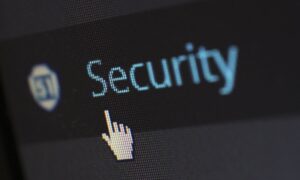In today’s digital age, email has become a crucial tool for communication and productivity. However, with the rise of cyber threats and phishing attacks, it’s more important than ever to prioritize email security. In this blog post, we’ll explore proven strategies to help you stay safe online and protect your personal information from malicious actors.
Introduction
In today’s digital age, email has become an integral part of our lives. It is the most commonly used form of communication for both personal and professional purposes. However, with the increase in cybercrime, email security has become a crucial concern.
Emails contain sensitive information, such as personal details, financial records, and confidential business communications. This makes them a prime target for hackers and scammers, who are constantly looking for ways to exploit vulnerabilities and gain access to this valuable information.
To protect yourself from falling victim to these threats, it is important to understand the basics of email security in the digital age. In this section, we will delve into the different aspects of email security and provide you with strategies on how to enhance your email security.
The first step towards securing your emails is understanding the various threats that exist in the digital world. Phishing attacks, malware attachments, and spoofed emails are some of the common methods used by cybercriminals to gain unauthorized access to your emails.
The importance of email security
In today’s digital age, email has become an integral part of our personal and professional lives. It allows us to communicate quickly and efficiently with people all over the world. However, with this convenience comes great responsibility. With cyber threats on the rise, it is essential for individuals and businesses to prioritize email security.
One of the primary reasons for the importance of email security is the sensitive information that is often shared through emails. From personal details such as bank account numbers and social security numbers to confidential business information like financial statements and trade secrets, our emails contain a wealth of valuable data that can be targeted by hackers.
Moreover, email phishing scams have become increasingly sophisticated, making it challenging to distinguish legitimate emails from fraudulent ones. These scams often use social engineering tactics to trick individuals into giving away their sensitive information or downloading malicious attachments or links.
Not only can these cybercrimes result in financial losses, but they can also lead to identity theft and other forms of fraud. The consequences can be devastating both personally and professionally.
Another reason why email security is crucial is compliance with regulations. Many industries have strict regulations in place regarding how sensitive information should be handled and protected when transmitted via email. Failure to comply with these regulations can result in severe penalties or legal consequences.
Common Threats to Email Security and How to Identify Them
Email has become an integral part of our daily lives, both for personal and professional communication. However, with the increasing use of email comes a heightened risk of cyber threats. Cybercriminals are constantly finding new ways to exploit vulnerabilities in email systems and gain access to sensitive information. In this section, we will discuss some common threats to email security and how you can identify them.
1. Phishing scams:
Phishing scams are one of the most common threats to email security. These scams involve sending fraudulent emails that appear to be from a legitimate source, such as a bank or a reputable company. The aim is to trick recipients into providing personal information or clicking on malicious links that can lead to malware installation.
One way to identify phishing scams is by carefully examining the sender’s email address. Often, scammers will use fake or similar-looking email addresses to make their emails seem more legitimate. Additionally, look out for any urgent requests for personal information or suspicious attachments in the email.
2. Malware Attacks:
Malware attacks involve infecting your computer or device with malicious software that can steal sensitive data or disrupt your system’s operations. These attacks often occur through opening infected attachments or clicking on malicious links in emails.
To identify potential malware attacks, be cautious when opening attachments from unknown sources and avoid clicking on suspicious links within emails. It is also essential to have reliable anti-virus software installed on your devices and keep it updated regularly.
3. Email Spoofing:
Email spoofing involves creating fake emails that appear to be from a trusted sender but are actually sent by someone else with malicious intent. These spoofed emails often contain harmful links or attachments that can compromise your data security.
To spot potential email spoofing attempts, check if the sender’s name matches their actual email address, and be wary of unexpected requests for sensitive information in these emails.
4. Email Account Hacking:
Hackers may target your email account to gain access to your personal information or use it to send spam emails. They can do this by guessing your password, using phishing scams, or finding vulnerabilities in the email server.
If you notice any unusual activity in your email account, such as missing emails or changes in settings, it could be a sign that your account has been hacked.
Being aware of the common threats to email security and learning how to identify them is crucial for keeping your data safe while using email. By staying vigilant and following best practices, you can significantly reduce the risk of falling victim to cyber attacks through email.
Strategies for Enhancing Email Security
Email has become an integral part of our daily communication, both in our personal and professional lives. However, with the increasing use of email comes the risk of cyber threats such as hacking, phishing, and malware attacks. In order to protect ourselves from these threats and keep our sensitive information safe, it is important to have strategies in place for enhancing email security.
Here are some effective strategies that can help you enhance your email security:
1. Strong passwords: The first line of defense against any cyber attack is a strong password. Make sure to choose a unique combination of letters, numbers, and special characters for your email account password. Avoid using easily guessable information like your name or birthdate. It is also recommended to change your password regularly.
2. Enable Two-Factor Authentication: Two-factor authentication adds an extra layer of security to your email account by requiring a code sent to your phone or another device before logging in. This makes it more difficult for hackers to access your account, even if they manage to get hold of your password.
3. Be Cautious of Suspicious Emails: Phishing scams are becoming increasingly sophisticated and can trick even the most tech-savvy individuals into giving away their personal information. Be cautious when opening emails from unknown senders or those asking for sensitive information, such as login credentials or financial details.
4. Use encrypted email services: Encrypting emails ensures that only the intended recipient can read the content of the message. This prevents hackers from intercepting and accessing sensitive information sent through email.
5. Regularly Update Software: Keeping your operating system and antivirus software up-to-date helps protect against known vulnerabilities that could be exploited by cybercriminals.
6. Beware of Public Wi-Fi: Public Wi-Fi networks are often unsecured, making them vulnerable to cyber attacks such as man-in-the-middle attacks, where hackers intercept data being transmitted over the network. Therefore, avoid sending sensitive emails while connected to public Wi-Fi.
7. Use Secure Email Servers: When choosing an email provider, make sure they have secure servers and use encryption techniques to protect your data. It is also important to read the privacy policy of the email service provider before signing up.
Best Practices for Secure Email Communication
In today’s digital age, email has become the primary mode of communication for both personal and professional purposes. However, with the convenience and efficiency that email provides also comes the risk of cyberattacks and data breaches. It is essential to take the necessary precautions to ensure secure email communication to protect sensitive information from falling into the wrong hands.
Here are some best practices that can help enhance your email security:
1. Use a Strong Password: The first step towards securing your emails is by having a strong password. Avoid using easily guessable passwords such as birthdates or pet names. Instead, use a combination of upper and lower case letters, numbers, and special characters to create a strong password that is difficult to crack.
2. Enable Two-Factor Authentication: Enabling two-factor authentication adds an extra layer of security to your email account. In addition to entering your password, you will also need to enter a unique code sent via text message or generated by an authenticator app on your phone.
3. Beware of Phishing Scams: Phishing scams are one of the most common ways hackers try to gain access to sensitive information through emails. Be cautious while clicking on links or opening attachments from unknown senders, as they could contain malware or lead you to fake login pages designed to steal your credentials.
4. Keep Your Software Up-to-Date: Make sure you regularly update your operating system and email client software, as they often include security patches that protect against known vulnerabilities.
5. Encrypt Your Emails: Encryption adds an extra layer of protection by converting plain text into code that can only be deciphered with a specific key or password. This ensures that even if someone intercepts your email, they won’t be able to read its contents.
6. Use Secure Networks: Avoid accessing sensitive information over public Wi-Fi networks, as they are not secure and can make it easier for hackers to intercept your emails.
7. Be Wary of Email Forwarding and Auto-Forwarding: If you have set up email forwarding or auto-forwarding rules, be sure to regularly review them to ensure they are not sending your sensitive emails to unintended recipients.
8. Train Your Employees: If you run a business, make sure your employees are aware of the best practices for secure email communication and train them on how to identify and report any suspicious emails.
Conclusion
Security is a continuous process, and it is essential to keep all your software and devices up-to-date with the latest security patches. Regularly monitor your email account for suspicious activity and report any unauthorized access immediately. By following these strategies, you can significantly reduce the risk of falling victim to email-related security threats.
































